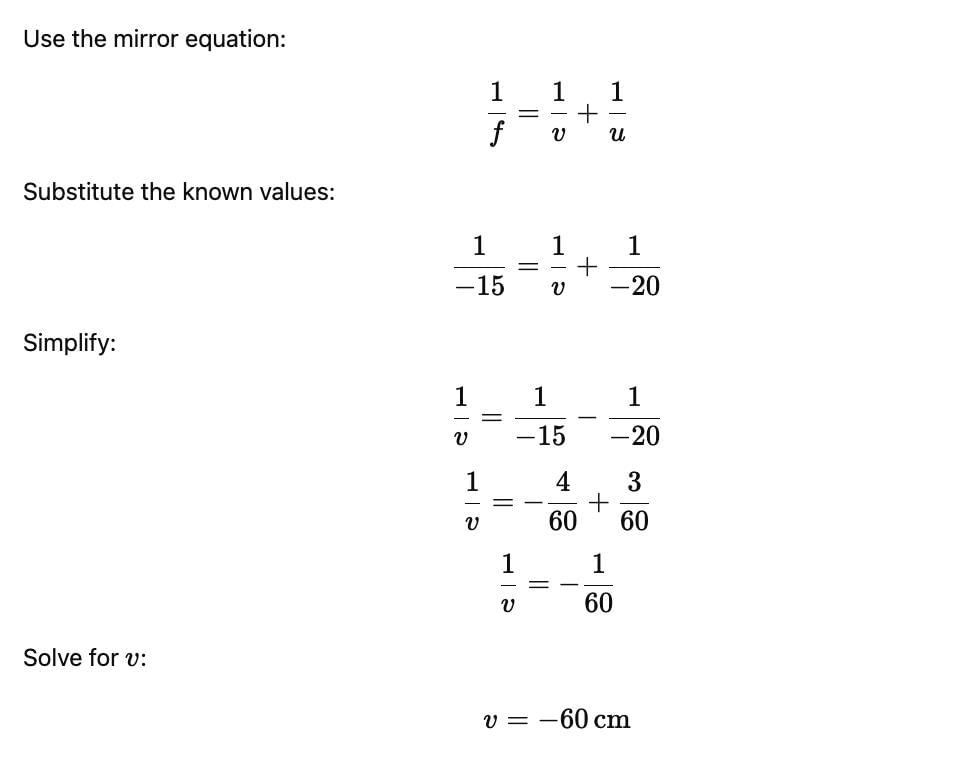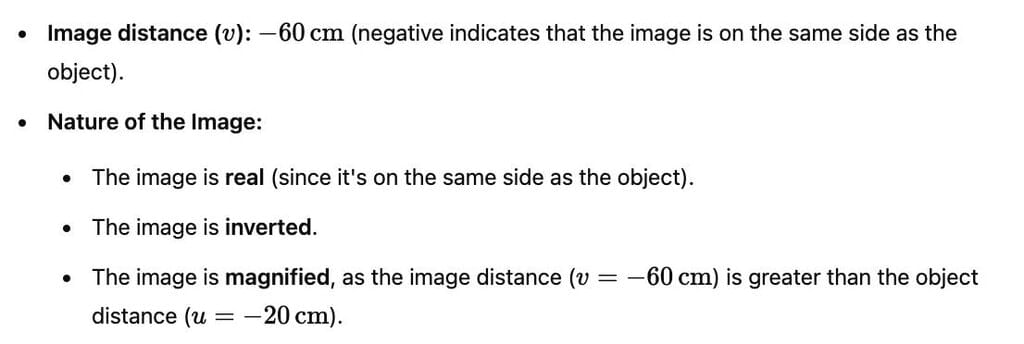Class 10 Exam > Class 10 Tests > Science Class 10 > Test: Mirror Formulae - Class 10 MCQ
Test: Mirror Formulae - Class 10 MCQ
Test Description
10 Questions MCQ Test Science Class 10 - Test: Mirror Formulae
Test: Mirror Formulae for Class 10 2025 is part of Science Class 10 preparation. The Test: Mirror Formulae questions and answers have been
prepared according to the Class 10 exam syllabus.The Test: Mirror Formulae MCQs are made for Class 10 2025 Exam. Find important
definitions, questions, notes, meanings, examples, exercises, MCQs and online tests for Test: Mirror Formulae below.
Solutions of Test: Mirror Formulae questions in English are available as part of our Science Class 10 for Class 10 & Test: Mirror Formulae solutions in
Hindi for Science Class 10 course. Download more important topics, notes, lectures and mock
test series for Class 10 Exam by signing up for free. Attempt Test: Mirror Formulae | 10 questions in 15 minutes | Mock test for Class 10 preparation | Free important questions MCQ to study Science Class 10 for Class 10 Exam | Download free PDF with solutions
Test: Mirror Formulae - Question 1
If the magnification has a negative sign, the image formed by the concave mirror must be
Detailed Solution for Test: Mirror Formulae - Question 1
Test: Mirror Formulae - Question 2
When the image is of double size as the object, the magnification is
Detailed Solution for Test: Mirror Formulae - Question 2
Test: Mirror Formulae - Question 3
When the image is of the same size as the object, the magnification is
Detailed Solution for Test: Mirror Formulae - Question 3
Test: Mirror Formulae - Question 4
An object is placed 20 cm in front of a concave mirror of focal length 15 cm. The image formed will be:
Detailed Solution for Test: Mirror Formulae - Question 4
Detailed Solution for Test: Mirror Formulae - Question 5
Test: Mirror Formulae - Question 6
Which one is correct as the new cartesian sign conventions ?
Detailed Solution for Test: Mirror Formulae - Question 6
Test: Mirror Formulae - Question 7
An object is placed on the principal axis of a spherical mirror. The object distance u is:
Detailed Solution for Test: Mirror Formulae - Question 7
Detailed Solution for Test: Mirror Formulae - Question 8
Test: Mirror Formulae - Question 9
An object 2 cm high is placed at a distance of 16 cm from a concave mirror, which produces a real image 3 cm high. What is the focal length of the mirror ?
Detailed Solution for Test: Mirror Formulae - Question 9
Detailed Solution for Test: Mirror Formulae - Question 10
|
83 videos|438 docs|74 tests
|
Information about Test: Mirror Formulae Page
In this test you can find the Exam questions for Test: Mirror Formulae solved & explained in the simplest way possible.
Besides giving Questions and answers for Test: Mirror Formulae, EduRev gives you an ample number of Online tests for practice























